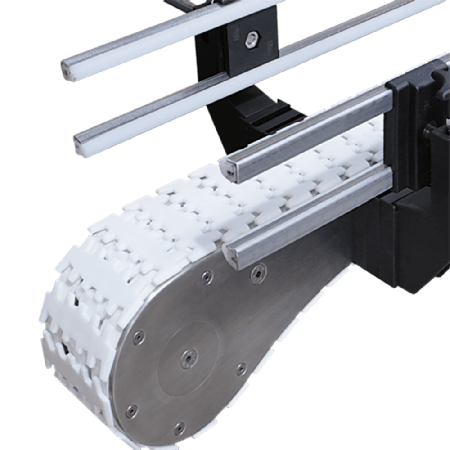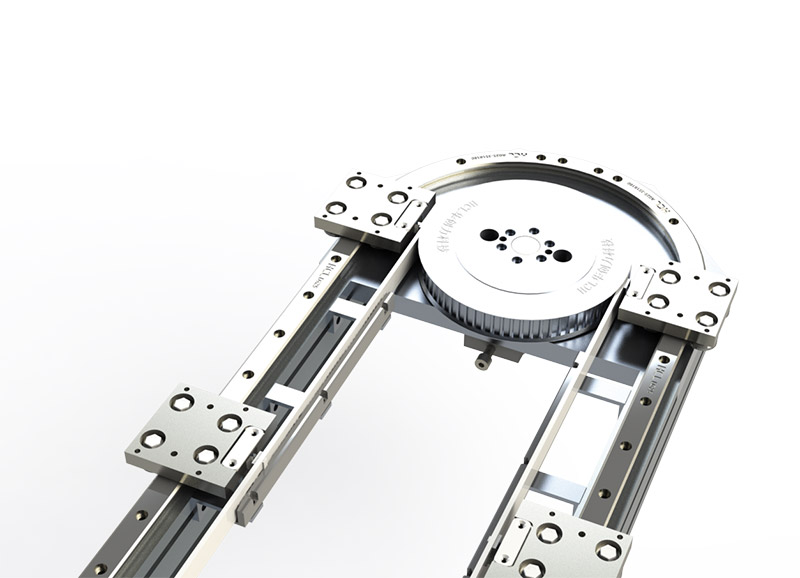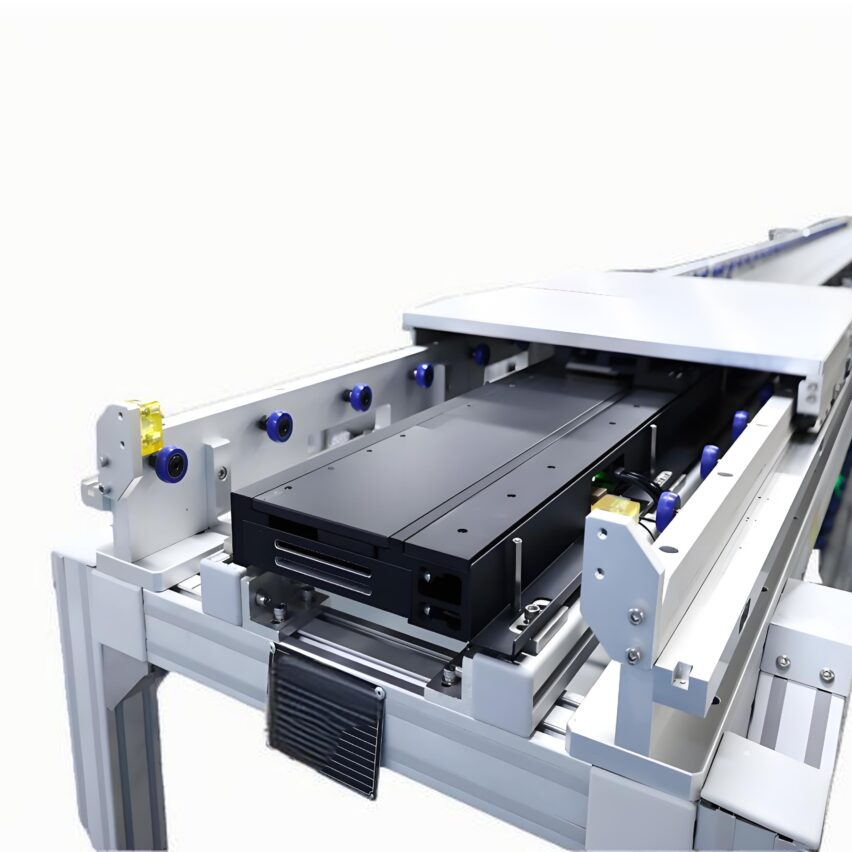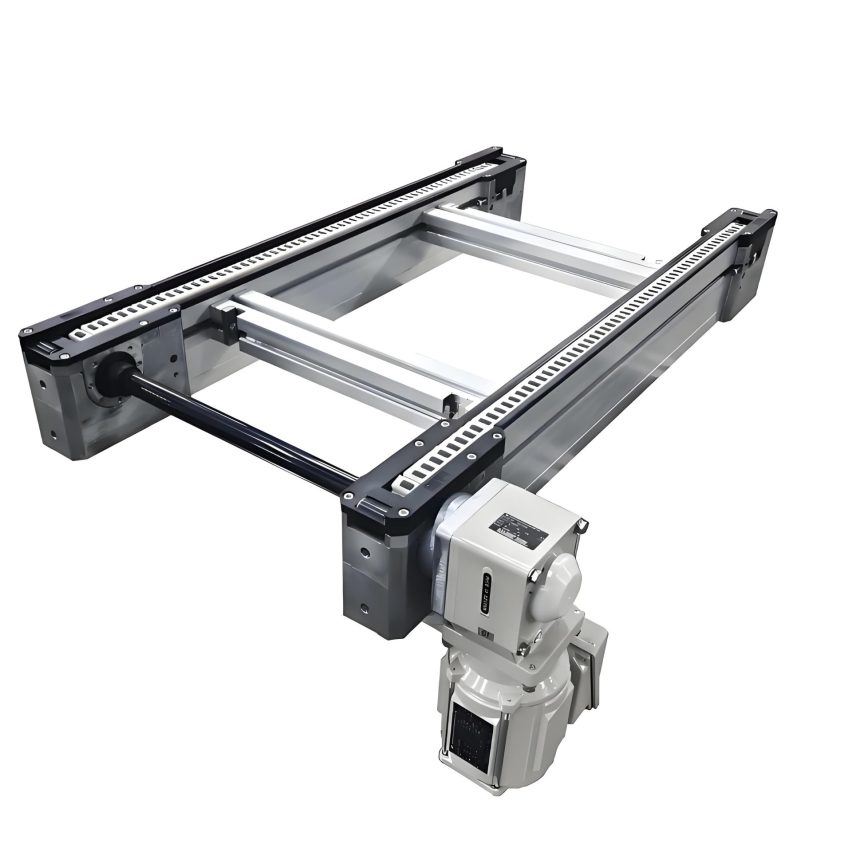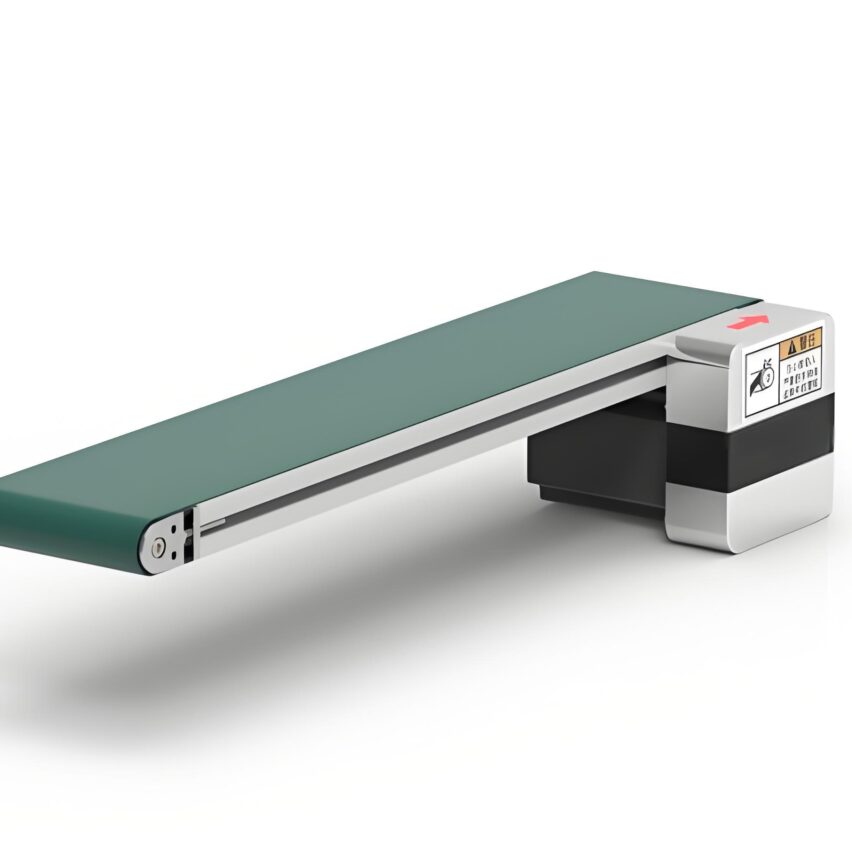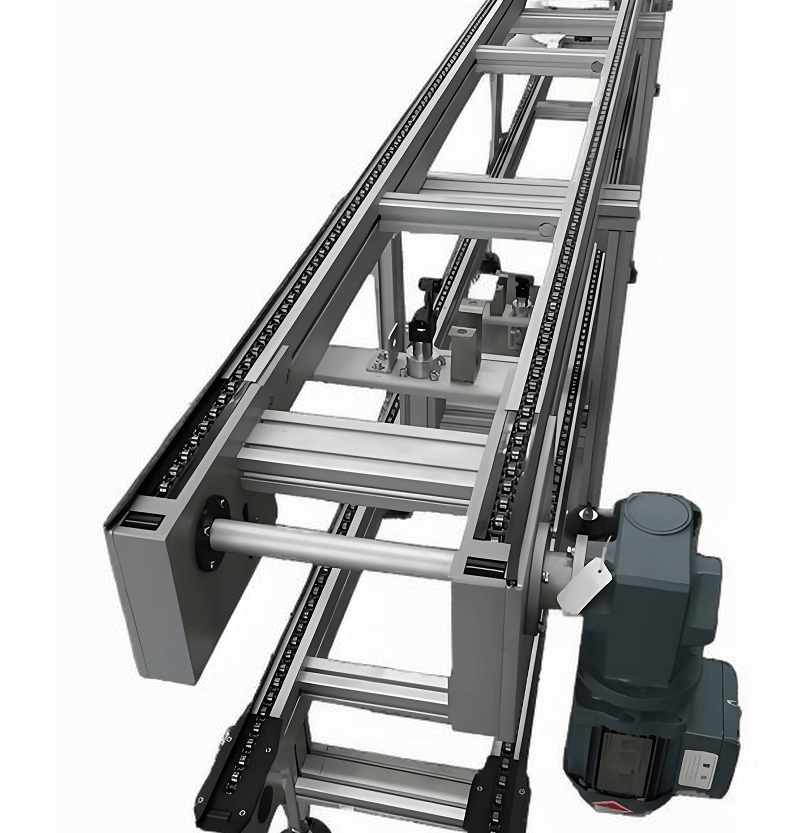I. Physical Acceleration Laws of Multiplier Chains: Spatio-Temporal Reconstruction of Rollers and Rollers
The core breakthrough of the intermediate flap speed multiplier chain is theDiameter differential structure--The synergistic action of the inner chain roller (diameter d) and the outer chain roller (diameter D) gives the work plate kinetic energy beyond the base speed of the chain. The physical equation can be expressed as:
Vgather
= Vcable length (= 1
× (1 + D/d)
When D = 2d, the speed of the work plate can be up to the chain speed of the3 times, creating the classic triple-quadruple effect.
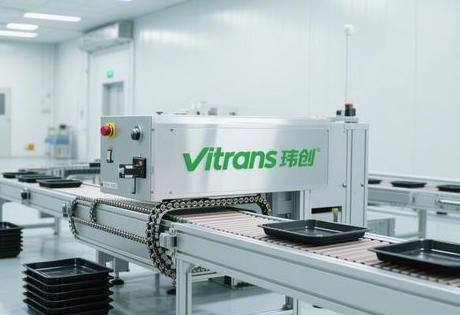
Key design to achieve triple speed::
- Diameter Ratio Regulation: Adaptation to different production tempos with 1.5~3 times D/d ratio
- Tribological optimisationCarburised steel rollers (tensile strength 1200MPa) to cope with heavy load impact, wear rate <0.01mm/ 10,000 cycles
- Dynamic stability controlExtruded aluminium alloy guide rail straightness ≤ 0.3mm/m, eliminating high-speed serpentine vibration
An auto parts factory measured: engine block conveying speed from 1.8m/min to 5.4m/min, line throughput increased 200%, positioning accuracy of ± 0.15mm.
II. Intermediate flap technology: the space folding revolution in 5-axis machining
The intermediate flap mechanism is a multiplier chain with a 5-axis machining centre.space-time coupling nodeThe machine is designed for continuous machining of both sides of the workpiece by 180° precision turning:
1. Mechanical synergies in the flap-multiplier chain
- Magnetorheological fluid damping positioning: Instantaneous viscosity jump of 500 times of the flap, braking time ≤ 0.1 seconds
- Dual Channel Thermal ManagementBuilt-in copper-aluminium alloy heat pipe (thermal conductivity 398W/m-K) in the workpiece plate reduces welding heat distortion 40%
2. Five-axis space reconstruction
matlabmake a copy of% 5-axis machining centre coupled with doubling chain motion model G_code = [A-axis angle, C-axis angle, X,Y,Z displacement]; Multiplier chain speed = f(machining centre feed rate, tool path curvature);The model enables the machining of an aerospace blade in aAuxiliary time reduction 67%The toolpath optimisation rate was increased by 351 TP3T.
III. Intelligent control matrix: quantum entanglement of data streams in metal veins
The intermediate flap multiplier chain builds"Edge-Cloud" three-tier decision-making network::
1. Link-level edge computing
- Workpiece on-board MCU compensates for thermal deformation in real time (8ms response delay)
- RFID and read-write linkage to achieve ±0.05mm level positioning, 6 times faster than traditional PLC
2. Digital twin preview system
- Physics-based engine to simulate heavy load deformation (0.01mm accuracy)
- A valve processing enterprise application, new product introduction cycle from 14 weeks compressed to 5 weeks
3. Energy blockchain management
- Energy-recovery-powered spindle motors with a "bat-wing" energy consumption curve (valley power consumption = 32% peak)
IV. Modular gene pools: cytokinesis in the production line
Intermediate flap doubling chain by modular designGenetic reorganisation of production lines::
| Module Type | Technical parameters | Creative Value |
|---|---|---|
| Quick-change flap head | Hydraulic clamping + hermetic testing | 3-minute fixture change |
| Separate drive section | Servo motors every 15 metres | Segmented speed regulation error ≤0.2m/min |
| 5-Axis Adaptor | HSK-A63 toolholder interface | Tool change time 2.5 seconds |
| Silicon Carbide Guides | Abrasion resistance 0.15 | Extended life up to 3 times that of conventional rails |
Application results of home appliance enterprises: 18 times a day to change the type, product switching time from 53 minutes to 8 minutes.
V. Mapping the rebirth of the industry: from turbine blades to ultra-thin glass
Aero-engine fieldThe breakthrough:
make a copy ofFive-axis machining of turbine blades: Flap positioning accuracy: ±12μm Surface roughness: Ra 0.4→0.1μm Machining cycle: 8.7 hours→5.2 hoursUltra-thin glass panel processingThen the brittle material problem is solved:
- Vacuum adsorption flap table (vacuum -95kPa) ensures streak-free clamping
- Ultrasonic vibratory cutting (40kHz) reduces edge chipping 76%
- Ambient temperature control ±0.5℃ (nitrogen curtain isolation), thermal stress deformation <2μm
A semiconductor company data: wafer carrier yield jumped from 89% to 99.97%, particle contamination <Class 1000.
Self-questioning: The Light of Truth through the Fog of Steel Framing
Q1:How to avoid workpiece offset at the moment of flap?
A.Triple positioning locking systemLinkage:
- Electromagnetic preloading: 0.5 seconds before the flap to start the magnetic adsorption (suction force ≥ 500N)
- Hydraulic pins: 4 Ø8mm hardened steel pins inserted synchronously into the locating holes
- Airtightness monitoring: Alarm will be raised if the sealing differential pressure of the detection fixture changes by more than 5% within 0.1 second.
Q2: How to compensate the thermal deformation of 5-axis machining?
A.Multi-source sensing for real-time correctionProgramme:
Compensation dimension sensor technology Precision Improvement Tool temperature rise Thermal imaging camera (50Hz) Cutting Error ↓68% Workpiece deformation Laser Displacement Gauge (0.1μm) Contour ↑42% Fixture Displacement Strain Gauge Array Positional stability↑75%
Q3:How to achieve parameter self-adaptation for multi-material machining?
A.Material fingerprint library x AI engine::
- Voiceprint feature extraction: Acquisition of cutting audio to create a material characterisation spectrum
- Dynamic parameter optimisation: Feed rate adjustment every 0.2 seconds (F=0.02~0.15mm/tooth)
- Tool Health Forecast: Current fluctuation >15% Automatic switching of standby tools
When an ultra-precision lab achieves 0.8μm profile accuracy for turbine blades on an intermediate flap doubling chain, that flowing liquid metal track is reconfiguring manufacturing philosophy.True machining precision lies not in perfect static positioning, but in absolute control during dynamic transitions.In the frontier test field, the contact flap mechanism based on superconducting magnetic levitation has achieved ±3μm levitation precision. And at the frontier test site, the contact flap mechanism based on superconducting magnetic levitation has achieved ±3μm levitation accuracy, and the combination with femtosecond laser machining is breeding an era of atomic-level manufacturing - perhaps in the factory of the future, the workpieces will be in a quantum orbit with the optimal path of space-time curvature, sliding towards the end of self-forming.
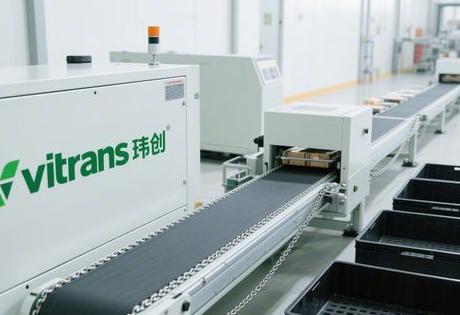
(Exclusive Data: Global Flap Doubling Chain Market Size to Surpass $2.47 Billion by 2025, with a CAGR of 11.3% - Data from Intelligent Conveyor Systems Blue Book)




